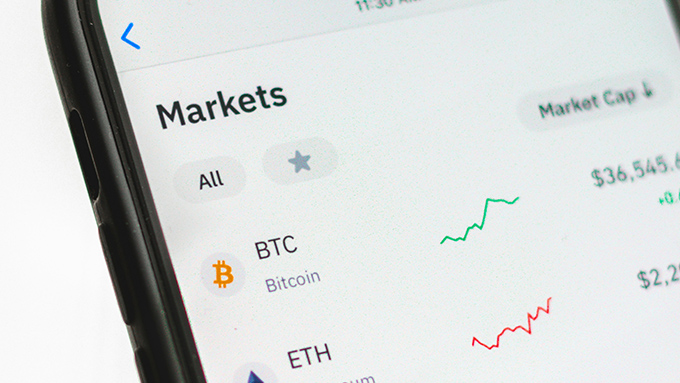Squeeze-out and Sell-out Rights in Public Companies
Introduction
Capital Markets Law No. 6362[1] (“CML”) regulates the squeeze-out, sell-out and exit rights in public companies for the first time[2]. While the shareholding status may cease upon the voluntary transfer of shares to a third person, under certain cases, other methods may be needed to terminate the shareholding. Especially with respect to events where shareholders hold a material majority of shares, the termination of the shareholding of other shareholders may be necessary even in the absence of a third party transferee, as the controlling shareholder may request to squeeze-out the minority, and the minority who has no control over, or is not in a position where it may affect the decisions in a company, may choose not to be bound by the consequences of such decisions. Therefore, these rights that have been granted under the CML are of material importance.
Art. 27 CML regulates the squeeze-out and sell-out rights in publicly offered companies or companies deemed to be public. Notwithstanding, the CML does not regulate when these rights are born, nor the principles and procedures governing their exercise, which are left to the regulations of the Capital Markets Board (“CMB”). The Communiqué No. II-27.1 governing the Squeeze-out and Sell-out Rights in Companies[3] (“Former Communiqué”) that has been issued in this regard entered into force on 1 July 2014. Notwithstanding, this communiqué was replaced with the Communiqué No. II-27.2 governing the Squeeze-out and Sell-out Rights in Companies that entered into force through publication in the Official Gazette dated November 12, 2014 and no. 29173 (“Communiqué”). This Newsletter article shall assess the squeeze-out and sell-out rights through comparing the provisions of the Former Communiqué and the Communiqué.
CML Provisions
Pursuant to Art. 27 CML, in the event a shareholder owns shares exceeding a threshold to be determined by the CMB, it will have the right to squeeze-out other minority shareholders. The wording of this provision reveals that the minority referred to thereunder is not the minority as defined under the Turkish Commercial Code No. 6102[4] (“TCC”), but rather the shareholders who constitute a minority with reference to controlling shareholders that hold shares in the percentage determined by the CMB.
Shareholders who have a right to squeeze-out the minority may request from the public company, within a time period to be determined by the CMB, the cancellation of the shares of minority shareholders, and issue new shares representing such shares to be granted to themselves[5].
Art. 27 CMB refers to Art. 24 in relation to the share price. This provision governing the price shall be assessed, together with the provisions of the Communiqué, below.
Art. 27 CMB further states that when the right to squeeze-out is born, the minority shareholder shall also have the right to exit the company. Accordingly, minority shareholders may, within a time period to be determined by the CMB, request that the majority shareholders, who have the right to squeeze-out, to purchase their shares at a fair value.
Thus, the squeeze-out right of a majority, and the sell-out right of a minority, is regulated under the same provision.
The said article expressly states that Art. 208 TCC, which is among the provisions governing group companies, and regulates the squeeze-out right of the controlling shareholders, shall not apply to public companies. This provision governs the right of a mother company to squeeze-out the minority in a subsidiary company causing disturbance and trouble. The legislative justification of the CML states that both provisions have a similar nature, and that the CML introduces a specific provision for specific cases that necessitate this exception to the TCC.
Art. 27 CML has left the application of this provision to the CMB regulations. Below, the provisions of the Communiqué are analyzed.
The Provisions of the Communiqué
The Communiqué regulates when the squeeze-out and sell-out rights arise, how these rights shall be exercised, the price for exercising these rights, and other miscellaneous matters.
Birth of the Squeeze-out and Sell-out Rights
In the event that a shareholder holds at least 98% of the voting rights of a company through a share purchase offer or otherwise, or if the controlling shareholder already satisfying this threshold makes an additional share purchase, it shall have the right to squeeze-out other shareholders. Once the squeeze-out right is born, the remaining minority shareholders shall have the right to sell-out their shares. The percentage of votes was regulated as 95% under the Former Communiqué. Evidently Art. 4 of the Communiqué sets a higher threshold. Notwithstanding, pursuant to the provisional Art. 3, the threshold necessary for the exercise of the squeeze-out and sell-out rights shall be 95% for rights that have arisen or will arise until 31 December 2014, and 97% for rights that will arise thereafter until 31 December 2017.
The shares indirectly or directly owned by the controlling shall be taken into consideration for the calculation of voting rights. Voting privileges or the voting rights of usufruct and purchase right holders shall not be taken into consideration. In this respect, the Communiqué differs from the Former Communiqué, pursuant to which voting privileges which are applicable to all votes of the general assembly would also be taken into account for calculating voting right percentages.
Exercise of the Squeeze-out and Sell-out Rights
Contrary to the Former Communiqué, the Communiqué regulates the squeeze-out and the sell-out right under the same provision.
The controlling shareholder holding at least 98% of the votes or making additional share purchases while already having reached this threshold is obliged to make a public declaration. The remaining minority shareholders may exercise their sell-out rights within a three month period starting as of the relevant public declaration. This right shall lapse and may not be exercised once the three month period has expired. Even if the controlling shareholder does not continue to hold its controlling position (based on the threshold determined by the CMB) for the duration of the three month period, the sell-out right may be exercised until the lapse of this period. The controlling shareholder must refrain from additional share purchases during this three month period, other than purchases as a result of the exercise of a sell-out right.
The sell-out right may be exercised for all, and not less than all, shares (whether privileged or not) of the relevant shareholder. The shareholder shall notify the company in writing of its request to exercise its sell-out right. The board of directors of the company shall confirm the shareholding status of the applicant, and procure the preparation of a valuation report revealing the purchase price for the minority shares within one month following the sell-out application. The company must, within this one month period and in any event within three business days following the public declaration of the valuation report, notify the controlling shareholder that a sell-out right is exercised. Contrary to the Former Communiqué, traded and non-traded companies are not subject to different time limits.
The controlling shareholder shall deposit the share purchase amount to the company account, at the latest within three business days following the notification of the sell-out right by the company to itself, and the company shall transfer this amount the second succeeding business day to conclude the share transfer.
The Former Communiqué regulated that the controlling shareholder could also use its squeeze-out right within the same three-month period, the lapse of which would result in the lapse of this right. Nevertheless, the Communiqué abandoned this approach. Accordingly, the controlling shareholder who wishes to exercise its squeeze-out right must do so within three business days following the lapse of the three-month period during which sell-out rights may be exercised.
The shareholder who wishes to exercise its squeeze-out right shall apply to the company, provide information on itself, and on the share price, submit a bank letter of guarantee, or block an amount in a private account to be used for the exercise of this right. The determination of the price to be paid is assessed in detail below.
The board of directors of the company shall adopt a resolution to cancel the shares of the squeezed-out minority, and issue new shares to replace the cancelled ones, and apply to the CMB for approval of the issuance certificate. The company must also apply for delisting from the exchange market. Following the completion of the procedures before the Central Registration Agency (“CRA”) that are explained below, the company shall be delisted from the exchange market and excluded from the scope of the CML. This transaction shall not give rise to an exit right.
Within three business days as of the CMB’s approval, the controlling shareholder must deposit the squeeze-out price in the company’s account. The private capital increase of the company shall be made through deduction from the reserves blocked by the controlling shareholder. Within one business day following the deposit of the squeeze-out price by the controlling shareholder, the company shall apply to the CRA for the transfer of this amount to the accounts of the squeezed-out shareholders, the cancellation of their shares and the transfer of newly issued shares into the company’s account. The CRA shall transfer the relevant amounts to the accounts of the investment companies of the squeezed-out shareholders. As of this date, the remainder amount for shares monitored by the company, or those that are not registered, shall be kept and blocked for a period of three years in an account to be established within İstanbul Takas ve Saklama Bankası A.Ş. (Istanbul Settlement and Custody Bank Inc).
The exercise by the controlling shareholder of its squeeze-out right, the cancellation of the relevant shares, and the invitation of minority shareholders to apply to the company for disposal of their shares in exchange for the share price, shall be publicly announced by companies whose shares are not traded on the exchange market.
Share Price for the Exercise of the Squeeze-out and Sell-out Rights
Art. 27 CML makes reference to Art. 24 in relation to the share price. Art. 24 CML regulating the exit right as a consequence of a material transaction in a company states that, the share price for public companies shall be the average of the weighted average prices in the exchange market within thirty days before the date of the public disclosure of the transaction. The CMB shall determine the procedures and principles of price calculation for companies whose shares are not traded.
The Communiqué regulates the determination of the squeeze-out and sell-out price in detail under Art. 6. The provision under Art. 7 of the Former Communiqué which stated that the fair value is equivalent to the purchase price regulated under Art. 24 CML is no longer preserved under the Communiqué. Different purchase prices are determined for the exercise of the squeeze-out and sell-out rights.
The purchase price for the squeeze-out rights for traded shares, and, if there is only one group of non-traded shares, for such shares of a company whose shares are traded on an exchange market, shall be equivalent to the average of the weighted average prices in the exchange market within thirty days before the date of public disclosure of becoming a controlling shareholder, or realizing additional share purchases. For multiple groups of non-traded shares, this price shall be the arithmetic average of the value to be calculated for each group.
The value of each share group for companies whose shares are not traded on an exchange market shall be determined through a valuation report.
The Communiqué refers to a “fair price” for the exercise of the sell-out right. Accordingly, for traded companies, the price determined for the squeeze-out right, the price determined per each share group through a valuation report, the price of a mandatory share purchase offer made pursuant to Art. 26 CML within the year preceding the public disclosure of control, if any, and the average of the weighted average prices in the exchange market for the last six months, last year and last five years shall be compared. The highest value shall be the purchase price when the sell-out right is exercised. For companies whose shares are not traded on an exchange market, the price determined through a valuation report and the price of the mandatory purchase offer shall be compared. The time periods that have lapsed for the actions the CML took in relation to information trading and manipulation under the CML shall not be taken into consideration for this calculation.
As can be seen, the purchase price differs for the exercise of the squeeze-out and sell-out rights. The shareholder exercising its sell-out right is granted an opportunity to be paid a higher price than what would have been paid through being squeezed-out.
Public Disclosure
The controlling shareholder shall publicly announce that is in a controlling position, that it realized additional share acquisitions while in this position, or that it lost its controlling position, that it has decided to exercise its squeeze-out right and the relevant purchase price.
The company shall publicly disclose any squeeze-out right request, the procedure of squeeze-out and the results of the squeeze-out, that sell-out rights may be exercised, the total number of shareholders making an application for exercising their sell-out rights and the percentages of their voting rights, the total price to be paid for the exercised sell-out rights, the results of valuation reports for determining the share price, and if the valuation report results are not ready, the price calculated under other methods referred to above.
Conclusion
The Communiqué provides for the principles and procedures of exercise of the squeeze-out and sell-out rights in public companies that is regulated for the first time under the CML. This right grants controlling shareholders, who hold at least 98% of the voting rights in a public company, to request the cancellation of the minority shares, and the issuance of new shares to be delivered to the controlling shareholder. On the other hand, the minority shareholders shall also have the right to request the controlling shareholder to purchase their minority shares of the controlling shareholder.
Contrary to the Former Communiqué, the fact that a shareholder obtains control through reaching the threshold set under the Communiqué or makes additional share purchases while already exercising this control shall primarily give rise to the sell-out rights of the minority shareholders. Only after the three month period when the sell-out right may be exercised lapses will the controlling shareholder be entitled to exercise its squeeze-out right These rights grant the minority the right to no longer be bound by the decisions adopted in the relevant company, and the controlling shareholder the right to full control over the company.
The price to be paid when the squeeze-out or sell-out rights are exercised are regulated separately and in detail under the Communiqué. The price to be paid for the exercise of the sell-out right, differing from the price to be paid for exercising the squeeze-out right, shall be through comparing values calculated under numerous methods, and applying the highest value.
[1] Entered into force through publication in the Official Gazette dated December 30, 2012 and no. 28513.
[2] For further information on squeeze-out, sell-out and exit rights under the TCC and CML see Leyla Orak, Squeeze-Out, Sell-Out and Exit Rights in Joint Stock Companies, http://www.erdem-erdem.av.tr/en/articles/squeeze-out-sell-out-and-exit-rights-in-joint-stock-companies/ (accessed on 15.10.2014); and further information on exit rights under the CML see Nilay Celebi, Communique Regarding Common Terms on Material Transactıons and Shareholder’s Rıght To Dissociate (II-23.1), http://www.erdem-erdem.av.tr/en/articles/communique-regarding-common-terms-on-material-transactions-and-shareholders-right-to-dissociate-ii-23-1/ (accessed on 15.10.2014).
[3] Published in the Official Gazette dated January 2, 2014 and no. 28870. The Former Communiqué was abrogated and replaced on 12 October 2014 by the Communiqué.
[4] Published in the Official Gazette dated February 14, 2011 and no. 27846, and entered into force on July 1, 2012.
[5] This provision differs from Art. 208 TCC. Art. 208 TCC regulates the right of the controlling shareholder to purchase minority shares and regulates share transfers. Whereas, pursuant to Art. 27 CML, the shares of the minority are cancelled, and new shares to replace the cancelled ones shall be issued and delivered to the controlling shareholder.
All rights of this article are reserved. This article may not be used, reproduced, copied, published, distributed, or otherwise disseminated without quotation or Erdem & Erdem Law Firm's written consent. Any content created without citing the resource or Erdem & Erdem Law Firm’s written consent is regularly tracked, and legal action will be taken in case of violation.

















